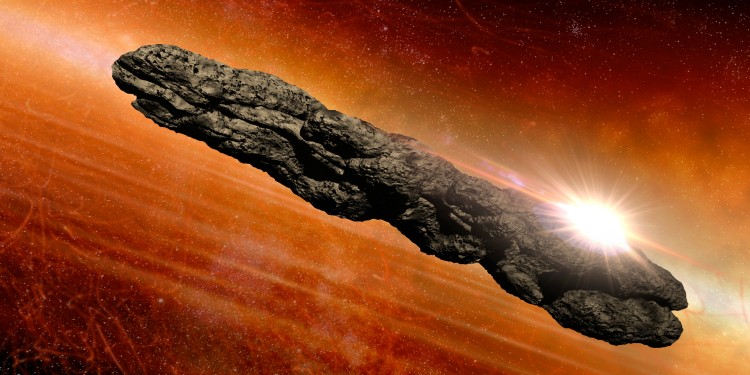In news- ʻOumuamua is the first interstellar object detected passing through the Solar System. A new study has offered a more sober explanation – that ‘Oumuamua’s speed-up was due to the release of hydrogen gas as the comet warmed up in the sunlight.
About the Oumuamua-
- The first known interstellar object to visit our solar system, 1I/2017 U1 ‘Oumuamua, was discovered Oct. 19, 2017 by the University of Hawaii’s Pan-STARRS1 telescope, funded by NASA’s Near-Earth Object Observations (NEOO) Program, which finds and tracks asteroids and comets in Earth’s neighborhood.
- Oumuamua, whose name refers in the native Hawaiian language to a messenger arriving from a great distance.
- While originally classified as a comet, observations revealed no signs of cometary activity after it slingshotted past the Sun on Sept. 9, 2017 at a blistering speed of 196,000 miles per hour (87.3 kilometers per second).
- It was briefly classified as an asteroid until new measurements found it was accelerating slightly, a sign it behaves more like a comet.
- ‘Oumuamua (pronounced oh-MOO-uh-MOO-uh) lacks the tail of gas and dust characteristic of many comets.
- It was previously described as being cigar-shaped but now is thought to resemble a rocky pancake. Smaller than originally estimated, it is now pegged at approximately 375 feet (115 meters) by 365 feet (111 meters), with a thickness of about 60 feet (19 meters).
- Researchers said it appears that ‘Oumuamua was born like many other comets as what is called a planetesimal – a small object formed in the early stages of planet formation – and was essentially a large, icy space rock.
- After it was somehow ejected from its solar system of origin, they said, the comet’s chemistry changed as it was bombarded by high-energy radiation while venturing through interstellar space. This converted some of the comet’s ice – frozen water – into hydrogen gas that was trapped within the rest of its ice.
- ‘Oumuamua then was warmed up as it passed through our inner solar system, causing the comet’s ice structure to rearrange and releasing the trapped hydrogen gas – giving ‘Oumuamua a little bit of a kick as it headed away from the sun. The release of this hydrogen in a process called outgassing would not cause a visible tail.
- Researchers said that they don’t know its place of origin but it was probably traveling through interstellar space for less than 100 million years.
- It had a reddish color consistent with the colors of many small bodies in the solar system. It is currently past Neptune on its way out of the solar system.
- A second interstellar object, the comet 2I/Borisov, was discovered visiting our solar system in 2019. This one looked and behaved more like a typical comet.
- These alien interlopers may be more common than previously known.
- The researchers said one to two interstellar objects may be discovered every year in our solar system once a new astronomical observatory now being built in Chile begins operations as planned next year.














